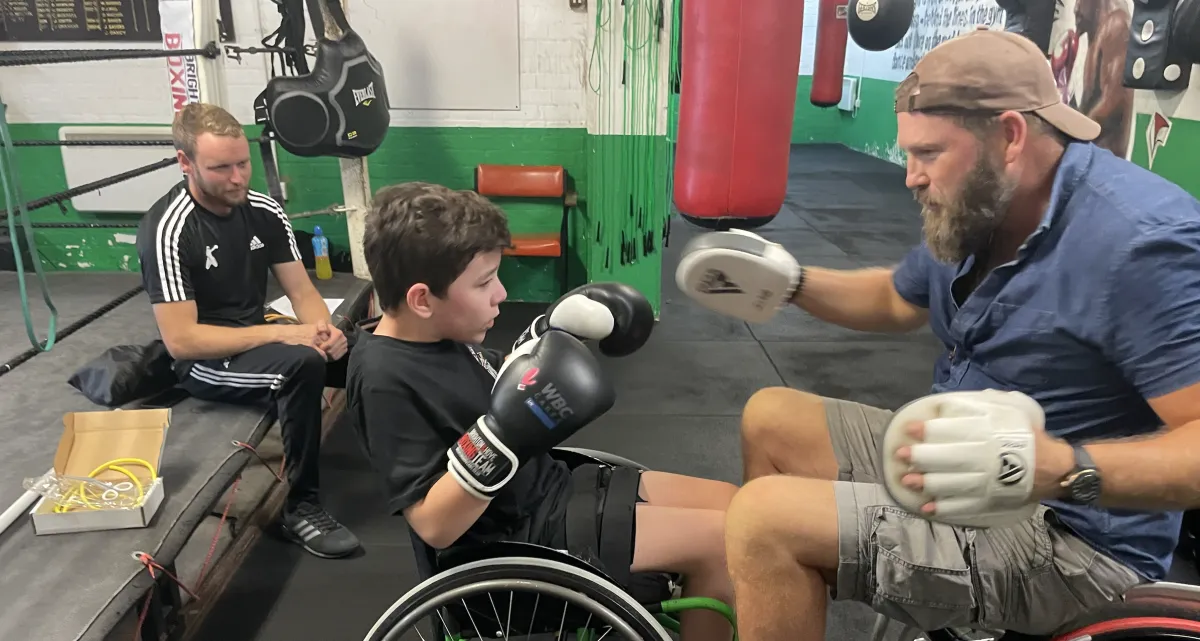
Breaking the Bubble: Understanding Disability Needs in Sports
When you’re deeply involved in the world of disability sport, you begin to see it as
second nature—adapting exercises, understanding accessibility needs, and fostering
inclusion become routine. But for many people outside this community, there’s a vast
knowledge gap about the specific needs and challenges that disabled athletes face. It’s
easy to assume that this gap stems from ignorance or neglect, but often it’s something
far less intentional: it’s simply not a part of their everyday lives.
As someone involved in adaptive sports, you likely have a deeper understanding of
disability than the average person. You know how crucial proper equipment,
modifications, and support systems are for athletes to excel. You understand how
significant it is to create inclusive environments where everyone can thrive regardless of
ability. But, stepping outside of this world often reveals that most people don’t share
this level of awareness—not because they don’t care, but because they haven’t been
exposed to it in a meaningful way.
The Bubble of Disability Sport
Involvement in disability sports, like adaptive boxing, creates a community where
understanding and accommodating diverse needs becomes the norm. We develop a
keen sense of the subtle details that make sports accessible and meaningful for all
athletes. From modifying techniques to suit different abilities to ensuring accessibility
in venues, we navigate a world that is fully adapted to include everyone.
However, this can sometimes create a bubble. We get used to the fact that adaptive
sports and disability needs are at the forefront of our minds, and we may forget that
others haven’t had the same experiences or opportunities to learn. It's not that they are
deliberately uninformed or insensitive—they just haven’t had to think about disability in
the same way we do. And when you live in a bubble of people who all "get it," you can
become complacent with how much others don’t know.
Lack of Knowledge is Not Always Ignorance
It’s easy to become frustrated when we encounter people who don’t understand the
challenges and needs of disabled athletes. However, it’s important to remember that for
many, disability is not part of their day-to-day reality. The adaptations we think of as
second nature may be completely unfamiliar to them. This doesn’t mean they’re
intentionally ignoring the needs of the disabled community—it simply means they
haven’t had to consider these issues before.
We must acknowledge that disability can still be somewhat of an "invisible issue" for
those not directly involved. Many well-meaning individuals simply haven’t been
exposed to the depth of what inclusion means, especially in the context of sports. They
might not understand the complexities involved in something like adaptive boxing or the
importance of tailored training for athletes with specific needs.
Building Understanding Through Engagement
The key to breaking down these barriers of misunderstanding is engagement and
education. It’s on us, as members of the adaptive sports community, to share our
knowledge and experiences in ways that invite people to learn, rather than assume they
should already know.
Here are a few ways we can encourage greater understanding and involvement:
1. Encouraging Exposure: Invite non-disabled individuals and those unfamiliar
with disability sports to attend adaptive events or training sessions. Allow them
to see firsthand the skill, dedication, and adaptations that go into these sports.
2. Educating Through Conversations: Be open to answering questions, even those
that may seem basic. This is often how people begin to understand disability
needs on a deeper level.
3. Raising Awareness in the General Sports Community: Partner with traditional
sports teams, gyms, and organizations to create more opportunities for adaptive
sports to be seen and understood by a wider audience.
4. Advocating for Representation: Make sure disability sports and the
achievements of disabled athletes are highlighted in mainstream media, giving
greater visibility to the community.
Fostering Empathy, Not Frustration
It’s easy to become frustrated when others don’t understand what we view as basic
considerations in the disability sports world. However, by fostering empathy and
recognizing that many people’s lack of understanding isn’t wilful ignorance, we can take
positive steps toward bridging the gap.
We should continue advocating for greater awareness, but do so with the understanding
that, for many people, disability is not yet part of their personal experience. The more we
can invite others into our world and show them what adaptive sports look like, the
better equipped they’ll be to understand the needs of disabled athletes.
Conclusion
In the world of disability sports, particularly in disciplines like adaptive boxing, we
develop an acute awareness of what it takes to create an inclusive and supportive
environment. However, it’s important to step outside of our bubble and recognize that
many people don’t share this understanding, not out of neglect, but because it hasn’t
been part of their experience.
Our role is to bridge that gap by inviting others to learn, share, and grow alongside us.
Together, we can create a world where inclusive sports aren’t just understood by a
small community but embraced by everyone. After all, once people know better, they’ll
do better—and that’s a powerful way to build a more inclusive future for athletes of all
abilities.